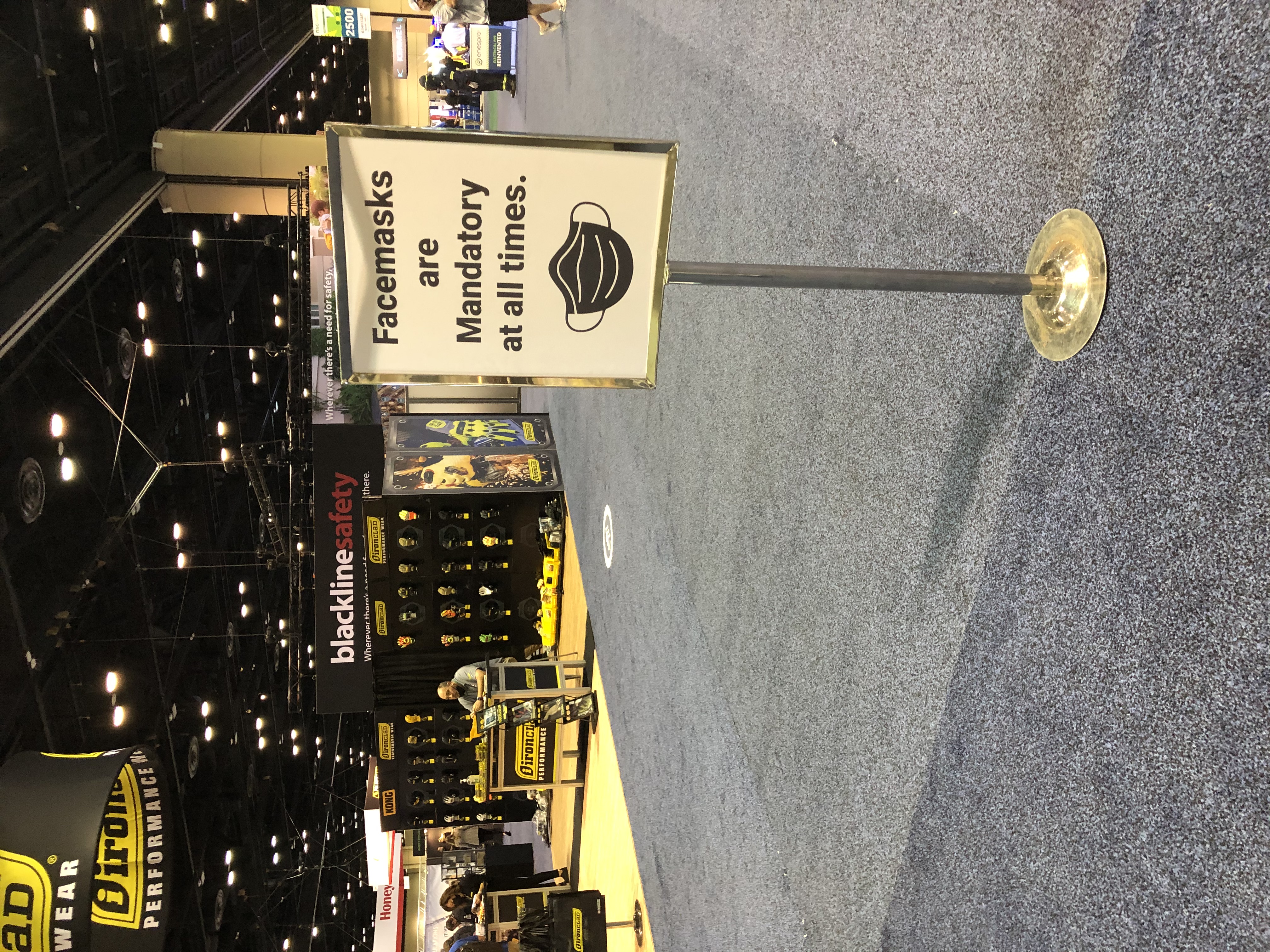In this unprecedented time, senior leaders are coming to EHS professionals for advice and counsel as never before. Worker health and safety has never been more visible; never the subject of daily presidential news briefings and saturation media coverage. COVID-19 could well be a tipping point for a heightened future status of the EHS profession “when we come out the other side,” as one pro says.
ISHN interviewed a score of EHS professionals to learn and share with you critical crisis practices that must be executed with careful thought and planning, and at the same time with urgency and speed. It’s an unprecedented challenge. Here are 12 ways pros are rising to the occasion.
1) Communicate, communicate, communicate
Silence can compound fear, worries and misinformation. “I suspect many medium-sized organizations that had stellar open-door policies three months ago may be literally and figuratively distancing themselves from their workforce,” says Jarred O’Dell, CSP, CUSP, safety director for Syracuse Utilities, Inc. “Before, an employee may have been able to ask a question or have a candid conversation with managers and even senior level executives. Now, with social distancing protocols enacted, rank and file workers may not even encounter senior level employees.
What’s replacing open, face-to-face dialog? The human touch?
“There’s a huge emphasis on communication,” says Doug Pontsler, former EHS Fortune 500 company executive and current chairman and managing director of the Center of Visual Expertise (COVE).
Communications take any number of forms: emergency call systems, 800 number hotlines, daily updates, teleconferencing, Zoom meetings, Skype calls, twice-a-week electronic newsletters, immediately notifying employees of any changes in pandemic plans and protocols. Text messages, email blasts, Facebook and Instagram posts.
2) Vet, vet, vet information
“Because this is a novel virus (it has never previously infected humans), uncertainty surrounding the circumstances (multiple signs and symptoms, transmission methods, segments of the population who are most susceptible, and when will our lives return to normal, etc.) has made it a very arduous time for safety professionals, says Matthew Herron, PE, CSP, CPE, senior safety engineer, Mechanical Engineering Division, Southwest Research Institute.®
“In today’s surreal environment with the COVID-19 pandemic, a new challenge has raised its ugly head, misinformation,” says Bruce Donato, CSP, CHMM, a principal with K&A First Aid and Safety, Inc. “The pandemic has proven a breeding ground for this. Webinars come out daily with ‘experts’ and the question is how to distinguish who you should believe.”
“The information we are considering for use or providing to our networks must be scientifically accurate or come from a reputable source,” says Pam Walaski, CSP, senior program director, Specialty Technical Consultants, Inc. “The professionals we are using for information must be ones we either have vetted or can vet. If the recommendations do not come directly from a source that can be verified, it should not be used. We must do our ‘homework’ before using materials from any source (policy templates, training curricula) or products we purchase (PPE and other safety equipment). Now more than ever, our organizations and the workforce we serve rely on us to lead with integrity. “
Professional credibility is now at stake in ways that will long be remembered.
3) Develop pandemic exposure preparedness plans
No two organizational health and safety programs are identical, and the same holds true with pandemic exposure preparedness plans. As always, resourcefulness, inventiveness and “out of the box” thinking is essential. Companies are employing a myriad of tactics that depend on state location; industry; essential or non-essential business categorization (varying by state); and the level of risk faced by employees – low risk in most cases, higher risk for employees in virus hotspots and jobs in healthcare, law enforcement, public transportation, emergency response, and workers in warehouses, grocery stores, food dispensaries and other retail businesses remaining open to public traffic.
Tactics include COVID-19 risk contact and contamination potential risk assessments (likelihood and severity); minimizing personnel on site; surgical mask requirements; temperature screening; facility off-limit restrictions; contact tracing for people who may have been in close contact with possible or confirmed infected cases; hand sanitizers at all work stations; adequate supply and mandatory PPE use; distancing requirements; rotating shifts to minimize exposures; separation barriers such as Plexiglass; no face to face meetings; isolation rooms for employees feeling ill; deep cleaning; intensified janitorial shifts; machine spacing; assessing jobs for improving social distancing; encouraging remote work; decentralized local supply purchasing; and promoting virtual diagnoses using telemedicine services from health providers.
OSHA recordability for COVID-19 cases is rift with questions:
- How to determine work-relatedness?
- How to keep up with good case management?
- Where to obtain laboratory test results to verify positive confirmation?
- What if an employee chooses to voluntarily self-quarantine?
- If and/or when to record an exposed employee who was sent home?
- If and/or when to report hospitalizations and deaths related to the disease?
Consult www.osha.gov/SLTC/covid-19/ for guidance on recording cases of COVID-19
4) Emphasize transparency
Now is no time for ambiguity, vague communication, and planting seeds of confusion and fear. EHS pros must be increasingly open about contagion risks at work and off the job. Employees must be honest about contagion risks they may be taking away from workplace. Openness leads to better engagement, reporting, raising concerns, speaking up, trust and honesty, says David Sarkus, CSP, David Sarkus International.
5) Ensure safety of on-site essential personnel
- Communicate the proper procedure of what to do if an employee experiences signs or symptoms of COVID-19.
- Re-emphasize the importance of the safety hierarchy of controls methodology -- implement physical distancing practices, create alternating work schedules, prohibit face-to-face meetings, wash hands for at least 20 seconds, and wear cloth face coverings (if it does not interfere with the currently required PPE).
6) Ensure safety of teleworkers
Decentralizing most of the workforce to work from home creates unique challenges. “As a safety professional, when your employees are working from home, you lose the ability to effectively mitigate hazards in their new work environment and observe their work practices,” says Matthew Herron of Southwest Research Institute®. He says alternative work locations should be evaluated to ensure that the new workspace is free from hazards, which can include:
- Ergonomics – Improper workstation setups (using a laptop while sitting on the couch) or the use of technology (tablets) can place the body in awkward postures (causing wrist, neck, and/or back strains);
- Life Safety – Obstructed egress paths could prohibit timely escape during an emergency;
- Electrical Safety – Incorrectly wired outlets and/or overloaded circuits can cause a fire;
- Fire Safety – Fire extinguishers not available or have not been maintained properly;
- Walking and Working Surfaces – Outstretched/unsecured laptop cords and cables can create tripping hazards.
7) Balance risk communications with the risk of inflaming fears
“Workers need to know the risks associated with their duties as well as effective means to reduce exposure,” says Anthony Marletta, MS, CSP, ARM, LEED GA, risk control consultant – UPS Dedicated Team, Risk Control Services, Liberty Mutual Insurance. “This duty requires the safety professional to walk a delicate line in order to promote good and safe practices while preventing the promotion of fear among the workforce.
“In my role as a safety professional, I often find myself motivating worker safety and health practices by stressing the values of family and personal well-being; however, in these times with many questions still unanswered, workers aren’t just afraid for themselves, but for the opportunity to expose their loved ones to this deadly virus.
“Today, workers are left with a choice between economic and health uncertainties and completely avoiding their families.”
8) Be mindful of the mental health of workers
“We’ve been providing mental health tips when sheltering in place,” says Mark Hansen, PE, CSP, SPE, vice president, risk and safety management for Contek Solutions.
To be sure, the human brain is not wired to tolerate uncertainty. If you’re feeling pandemic panic, it’s only natural, according to neuroscientists at University College London. And anxiety is contagious, according to researchers at the Max Planck Institute for Human Cognitive and Brain Sciences in Germany. So when we see worrying on a global scale, it’s not surprising that we’ll be affected.
EHS pros are encouraging employees to use Employee Assistance Programs (EAPs) for counseling about anxiety and depression, feelings of isolation and loneliness. They also plug wellness programs and the benefits of exercise to reduce worrying.
9) Keep training going
“Training needs must continue,” says Jarred O’Dell of Syracuse Utilities. Especially on COVID-19 risks and precautions. “The challenge has now become how do I get the information to them? For this, we have applied two strategies:
- “First, diversify your approach. Maybe you start using a new Learning Management System (LMS). In addition, you send out email blasts. Further still, maybe you start a restricted access group for employees only on Facebook for making information available. All of these options are asynchronous. You might be surprised when employees will read an email, or follow discussion posts after hours, on weekends, or when you are asleep. In some ways, it does not matter what you do, just that you try to connect to people in new ways.
- “Second, you need to assess how these new methods are working. Install a mechanism to get feedback from the workforce. What method(s) do they prefer? Better yet, do they have any recommendations for adjusting existing systems to be more effective?”
10) Reach out to communities
We’re all in this together. Psychology professor Dr. E. Scott Geller calls it “interdependence.”
Says Ashley Kunz, CSP, MS, MBA, director of environmental, health and safety at Micron Technology, Inc., “In addition to our EHS protocols, Micron has been committed to donations within the communities we operate in. EHS has been involved in determining Micron donations to include: monetary funding ($10 million through our foundation), PPE (N95 masks, gloves), and development of new equipment and technologies to aid in combating the virus at the request of local hospitals and health care providers. We truly believe in working together as a global community to marshal our resources as effectively as possible to keep not only our team members, but communities safe.”
11) Find ways to personally de-stress
Employers are stressed. Employees are stressed, and their families too. Laboring under extraordinary circumstances, EHS pros can be overwhelmed by demands and stressed out.
“One of the major challenges is trying to be present for others and attend to their needs - whether it is for individual workers or providing information for leaders that is credible - while managing the stress that situations such as this cause for everyone, including safety professionals, says Diana Stegall, CSP, ARM, executive vice president of Rivendell Safety Consulting and current president of the American Society of Safety Professionals (ASSP). “For me, going for a long walk and focusing on the nature around me helps to keep things in perspective and I hope others have found productive ways to deal with the stress and protect their own mental health.”
12) Show genuine leadership
Shifting from high-caliber, high-profile visible daily leadership to sequestered and remote leadership is a daunting challenge that can have a demoralizing effect on the workforce. EHS pros point to numerous ways to demonstrating genuine, caring leadership: ongoing communication; alerts and updates (no radio silence); continued training; flexible; adaptable pandemic preparedness planning; concern for mental as well as physical health; relaying only scientifically sound, credible information (no fake news); openness, honesty and transparency; and ensuring essential and non-essential workers, on-site and telecommuting employees, and their families are treated equally in terms of fairness and respect for their concerns, questions, complaints and generalized anxieties.




